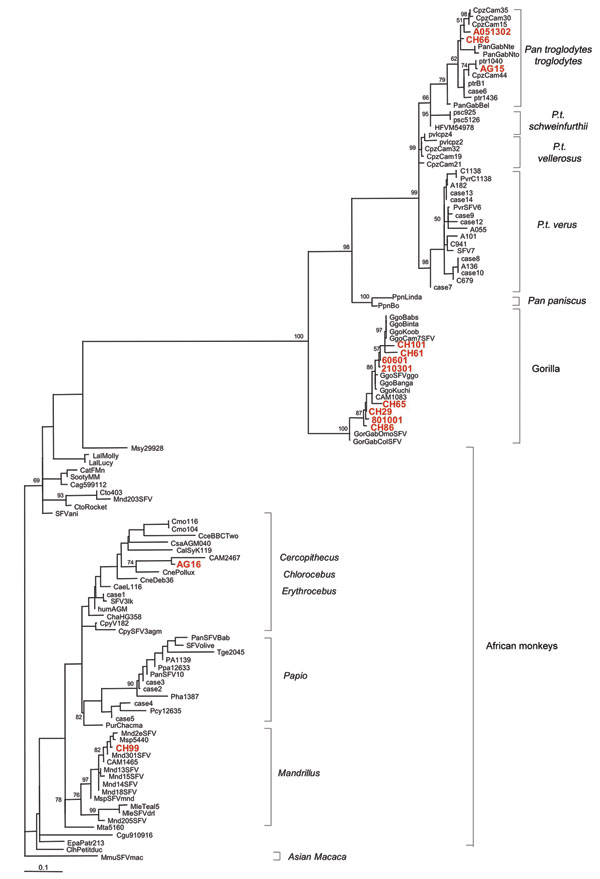Volume 13, Number 9—September 2007
Research
Simian Foamy Virus Transmission from Apes to Humans, Rural Cameroon
Appendix Figure

Appendix Figure. Phylogenetic tree generated on a 425-bp fragment of the integrase simian foamy virus (SFV) gene. The 13 new SFV sequences described in this study are shown in red. Numbers at each node indicate the percentage of bootstrap samples (1,000 replicates); only values >60% are shown. The branch lengths are drawn to scale with the bar indicating 0.1-nt replacement per site. The tree was rooted by using the Asian Macaca mulatta (MmuSFVmac) sequence.
Page created: July 01, 2010
Page updated: July 01, 2010
Page reviewed: July 01, 2010
The conclusions, findings, and opinions expressed by authors contributing to this journal do not necessarily reflect the official position of the U.S. Department of Health and Human Services, the Public Health Service, the Centers for Disease Control and Prevention, or the authors' affiliated institutions. Use of trade names is for identification only and does not imply endorsement by any of the groups named above.